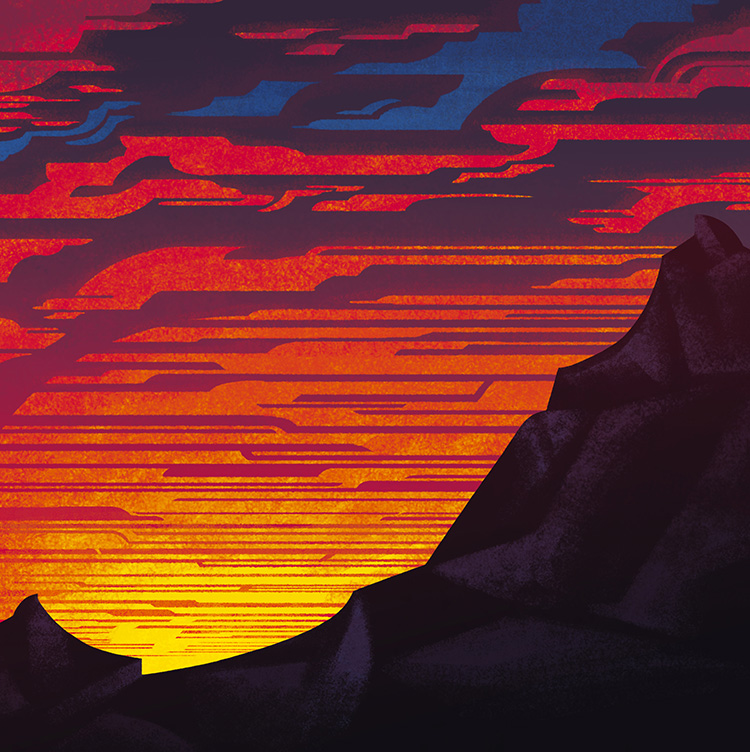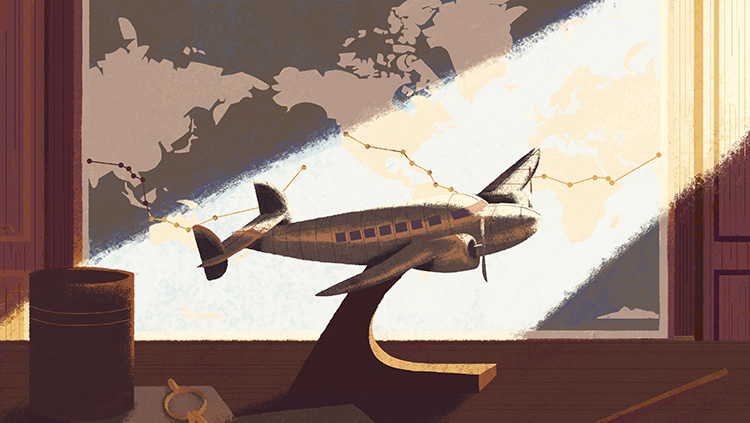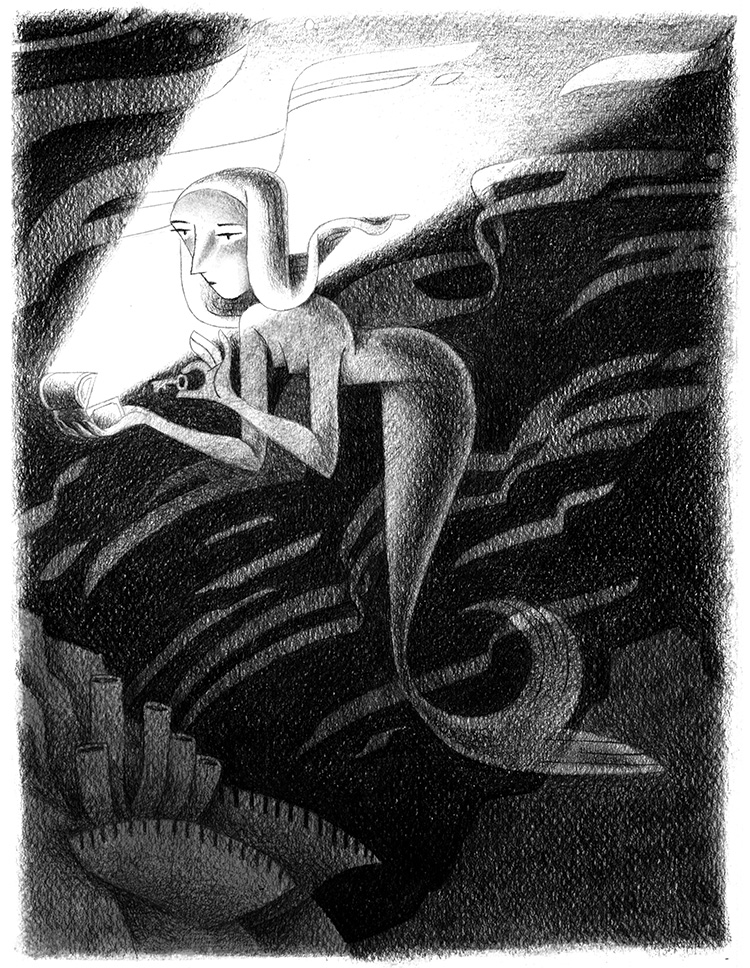Story Artist Sasha Schotzko-Harris Talks Storyboarding For TV & Film
Story Creative person Sasha Schotzko-Harris Talks Storyboarding For Tv set & Film
Interviews Disclosure: This mail service may comprise affiliate links. That ways if y'all buy something nosotros go a minor commission at no extra cost to you(learn more)
Sasha is a very talented story artist with credits on South Park and Lego Movie two. Her art educational activity comes directly from Cal Arts and she's got a fantastic story.
In this interview Sasha talks about her experiences working in the animation industry and she shares a few tips for aspiring artists.
To learn more than you can check out her portfolio site or scan her artwork on Instagram @Sasha.Schotzko.
Tin can you share a picayune about how you got into art?
I always liked drawing as a kid and I watched tons of cartoons with my dad.
He showed me how to do finish motion animation with our family camcorder and I fabricated a bunch of films with my Lego bricks and dinosaur models. Through him, I saw that animation was something that people of all ages tin capeesh.
I decided at age 12 that I was going to go to Calarts, study grapheme blitheness, and work in blitheness.
What was your feel like at Calarts? Do you lot think information technology was worthwhile going in that location and do y'all call up it'south yet a expert idea for animation artists to attend college over cocky-learning?
Calarts was not bad, but very hard.
I hardly slept for four years. Just I made four films, lots of friends, and good connections in the industry.
Yet in that location were also plenty of flaws in the Calarts curriculum, and you end up doing a lot of self-instruction to fill in the gaps.

I think that there is an impression that Calarts is the just place to get if you want to go far in the blitheness industry, only this is just not true. There are many other great animation schools all with their own strengths and weaknesses.
Some will exist amend for those wanting to do visual development and groundwork design for features (these were not Calarts' strengths). Others will exist great for CG (Calarts is getting better at this, but still has a way to go). And some volition be great for storyboarding and TV design(this is generally where Calarts shines).
No matter what schoolhouse you lot're at, you tin go a smashing artist in your chosen field. It will just take cocky-subject field and cocky-teaching skills.
And some amazing artists have made information technology in the industry with no formal training at all. Everyone is unlike, equally is what's best for them.
Your student movie "Something Afoot" is really fantastic. Can you share a little on the making of that film? How long did that accept & what tools did you lot use for animating?
"Something Afoot" was my fourth-year film at Calarts. It was my commencement time trying to do a comedy and I was very anxious about that, but the process ended upward being really fun.
And I learned a lot about writing and directing—especially directing voice actors and musicians to deliver your jokes the manner you've envisioned them.
Working on this film, which was by far my longest and well-nigh ambitious picture, was also when I realized that I didn't demand to be awake for seventy-two hours at a fourth dimension to go my work done.
Sleeping for 8 hours a night helped me produce as much piece of work or more I had when pulling all-nighters.
Pre-production on this flick took about three months, and production lasted near 3.5 months (of doing nix else). The backgrounds were done in Photoshop, the animation was done with TV Paint, and the compositing was done in After Effects.
What's the story of how you got hired on South Park?
South Park has a hiring process unlike any other.
The Art director came to portfolio day in my last twelvemonth at Calarts and gave me a phone call-back. At his berth nosotros talked most the show and what they do, and I told him honestly that I'd never seen a full episode of it (little did I know this was a plus for them).
I after got a telephone call to come interview at the studio and was given a boarding examination (a common hiring practise for Boob tube blitheness) that had to be washed in twenty-four hours (an uncommon hiring practice for Tv animation).
I stayed up all night to practice it since I had a solid twelve-hour twenty-four hours of classes, and turned it in just before the deadline.
Then they chosen me in for what they telephone call "Boxing Calendar week".
This is where they have 2 spots they want to fill for the show, and they bring in four finalists to compete for those spots. You are given exam assignments through the calendar week and they see who does the best, and who they feel fits in best with the team.
My friend Kristen and I were ultimately selected for the two open seats. My season on South Park was very tough.
We were doing 100 hour weeks and I felt similar I had been dropped correct into the deep end of animation. I didn't know what I was doing, and I felt like I could never do it fast enough.
But I besides really enjoyed my time spent with the story coiffure.
We'd work late, simply always joked around and had fun together.

What's the typical boarding procedure on Southward Park?
The story squad was vi artists and an art manager.
Something a lot of people don't know about the story team on South Park is that they also practice all the backgrounds, grapheme designs, grapheme poses, prop pattern, and sometimes blitheness if it has to be fatigued.
Nosotros would do all of this for a whole episode in six days, then deadlines were tight.
You were expected to lath each page of script in twoscore-five minutes, with an extra 15 minutes for revisions. You needed to stick pretty closely to the script but could exist artistic with any of the interim and expressions in the scene.
When you were in production what's a typical weekly schedule? Are you basically at the studio every day to continue upward with the 7-day deadline?
Here was the standard story team schedule while I was in that location to the best I tin can think:
Thursday: 11 AM-7 PM (Trey is just starting to write the episode, and then in that location'southward not much to practice)
Friday: 9 AM – 10 PM
Saturday: 9AM – 10PM
Sunday: 9 AM – 12 AM Adjacent day
Monday: 9 AM – 2 AM Adjacent day
Tuesday: 9 AM – six AM Next day (Most of the work is done from 10-to-midnight, but we have to wait for any last minute changes that might need to be done)
Wednesday: off (besides being at work until 6AM that forenoon)
How did yous discover your mode to working on Lego Motion-picture show ii? What'south that process like working on such a big feature film?
I had a friend from school working on Lego 2 and she recommended me while they were on the hunt for new lath artists.
I was a little nervous about leaving S Park, but I also actually wanted to have a more standard work schedule.
The process is so much slower in Feature!
Turning a ship like this takes months and months. You tin can end up re-doing something over and once again to accommodate the story irresolute bit by bit over years, and scenes become thrown out all the time.
I've worked on Lego 2 for a year and a half, and I won't really know if my work has fabricated it into the pic until it comes out February 2019.
At South Park what you did on Monday would be on TV Wednesday night.
Are at that place whatever major differences between storyboarding for Idiot box vs. film? Do you prefer 1 over the other?
For me, the biggest differences accept been deadlines and creative input.
I now have a few days or a week to lath a page of script, and I have a lot more creative liberty with what I board.
I am often encouraged to modify whatever I don't like about the script and write new dialogue and jokes.
Sometimes I don't get any script at all to lath from, simply a loose verbal pitch, and I become to come up with whatsoever I desire to make it from point A to point B in the story. I definitely prefer it to working on scripted Television receiver blitheness.
If someone wanted to go a truly skilled board artist what practice you retrieve they should focus on? Is it by and large about speed, accuracy, storytelling, or peradventure something more?
I recollect if you had to pick 1 skill to focus on it would be speed (and this is one I nevertheless struggle with).
I say this because it is the skill that volition help y'all the almost in improving every other category.
Iteration is the best teacher, and speed is the skill that volition assist you iterate the virtually.

How useful is life cartoon for someone interested in blitheness art?
Life drawing is very useful!
Even if you just desire to do cartoony art styles, it doesn't hurt to know how to draw more realistically for a few reasons:
one. You won't always take the luxury to choose what you work on. The more than you can practise, the more doors volition open to you when you need them.
ii. Life drawing teaches a lot more than only anatomy. You learn form, perspective, and weight as well. These are all principles that are important in whatever form of animation, realistic or cartoony.
3. Learn the rules so that you can break them. Yous desire your characters to be drawn and posed a sure fashion because that is how you desire it to look, not because you've reached the limit of your skill sets.
Life cartoon is important, just can be done in a way that isn't very benign to developing blitheness skills.
Three-60 minutes poses focused on shading aren't going to benefit the aspiring board artist.
Gesture cartoon and brusque poses, however, are very helpful.
I would recommend Walt Stanchfield'due south "Drawn to Life" for a good guide on how to utilise effigy drawing every bit a tool to enhance your boarding and animation skills.
Any fun projects or ideas in mind for the future?
After seeing how the animation industry tin take your project and mold it into something y'all don't like, or even fire y'all off it to have another director make it, I've come up to realize the value in independently made artwork that is a pure expression of the creator.
I've gotten into comics lately since independent publishing is and so accessible, and I've been working on my ain graphic novel about the disappearance of Amelia Earhart.
It's boring going, only it'due south still nice to have personal creative goals to work towards.
Any final advice for aspiring story artists?
Go out and live life!
You can't write what you know if you merely know drawing.
Get a hobby, get outside, learn an instrument, do something also draw and watch TV!
Information technology will brand you a more interesting and well-rounded person. And it volition give you more experience to describe upon in your work.
Many cheers to Sasha for taking fourth dimension out for this awesome interview.
Some gold nuggets in hither for anyone looking into storyboarding or whatsoever type of animation art every bit a career.
You can find some of Sasha's educatee piece of work on Vimeo here and keep up-to-date with her more recent drawings on Instagram.
Source: https://conceptartempire.com/sasha-schotzko-harris-interview/
0 Response to "Story Artist Sasha Schotzko-Harris Talks Storyboarding For TV & Film"
Post a Comment